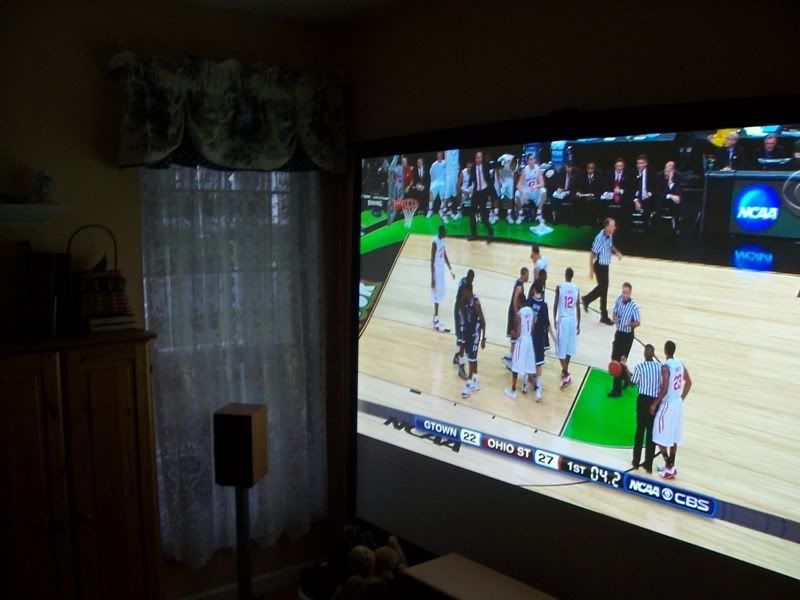I like front projection, but unfortunately I just do not have the house to match. Perhaps one day I will add on a theater room, but without light control it is just too hard.
I have plasma, rear projection, LCD and tube:
Tube: I have decided to never buy another tube again. They are just too big and heavy with tiny pictures (relative now where 30-36 is tiny). The ones I have now will last forever. If one of them were to break before I replaced it, it would be replaced with a different technology. I expect them to all be discarded long before they break. One big strength of tube is that they last 20+ years.
Rear Projection works well in room situations that do not have seating/viewing from off angles. There is a huge difference between the center viewing and off angle viewing. For casual TV it is not too big a deal. The only thing is that you need a large screen for rear projection to pull ahead of flat panel in price. You also have a much thicker set. There are some new slim ones coming out, but they tend to cost more and are smaller screens which negates the pricing advantage. The other issue is that if you are going to have a huge screen, it is probably going in a large room, which probably has seating that is not all in the center leading to off angle viewing issues. It is definitely a good technology, I just view it as one that requires a match to the viewing room (just not as restrictive as front projection).
Plasma, what can I say, it gives a fantastic picture. It is thin, has great viewing angles, and every year they produce great improvements in the picture quality. But, the really good plasmas tend to be very expensive still. Pioneers still are not "cheap". They are competitive with LCDs in price only because LCD prices go to the stratosphere when you go over 52". As much as I like my plasma I do not think I will buy another because of the mental anguish it gives me. Mental anguish? You ask? Well there is a "burn in"/"Image retention" issue with plasmas still. No, I have never had an issue with my plasma, but I cannot stop thinking about it. When I watch 4:3 material I want to have black bars on the side. I absolutely hate stretched video (I know it does not bother some, my parents always stretch everything since they are more bothered by an empty area on the screen). So, I usually go for grey bars on the side. That bothers me too, but just not as bad as the stretch. Then there are 2.35:1 movies, they have bars on the bottom. They make me paranoid too. What happens if I pause something and forget about it? My current plasma is over 2 years old and has no sign of burn in, but that is no comfort to me. Plasmas also need a darker room than LCD, they tend to wash out easier if you have a lot of sunlight in the room. Not saying you need a cave, but I would not put in a sunroom.
LCD: Well they work great too. They have a picture that can rival (and many argue surpass) plasma. They have a huge picture quality range. Much larger than I see in rear projection or plasma. The low quality ones are extreamly bad picture, the high quality ones people argue back and forth with the plasma people. The contrast range of LCD has been its weakness. Great strides have been made, but to get these great strides you have to pay. LCDs have dropped in price extreamly fast. Right now I am shopping for an LCD TV as a background exercise. The picture is getting good enough, and the price of the 52" and lower is dropping rapidly. I expect price/picture quality/size to be about right by the end of the year or perhaps January sales times.



